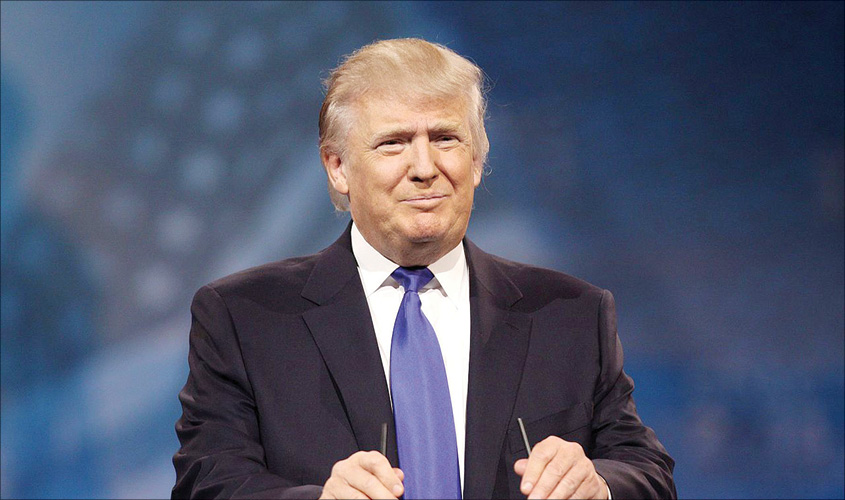A bipartisan consensus is emerging on China and the tough stand taken by the President on China will continue no matter who wins the November election.
The 2020 Presidential election in the United States is going to take place in the midst of a pandemic that has killed more Americans than people in any other country of the world. The deadly coronavirus was taken very lightly by President Donald Trump during the initial days and weeks of its spread, with him refusing even to use a mask.
But the situation has worsened to an extent where the US President has not only been seen wearing a mask in public places but also has been toying with the idea of postponing the election. This idea came to him partly because he is trailing behind the presumptive Democratic nominee, Joe Biden, a former Vice President of the US. Secondly, he is suspicious of possible large-scale postal voting and apprehends that there could be a rigging of votes.
Significantly, the US President has no Constitutional power to alter the date of the presidential election. The US has conducted elections in the midst of the Great Recession and World Wars and even the Civil War and thus there is least possibility of any change in the date of election in 2020. Secondly, the President of a mature democracy like the US fearing of a possible rigging has not gone down well with the public.
Before the pandemic took a heavy toll on the health and lives of millions of American citizens, the US economy looked bright and the hegemonic behaviour of the Trump Administration made it appear that Donald Trump was very much on his way to make America “Great Again”. President Trump appeared euphoric about his likely second term in office. In his typical style, he had started making sarcastic remarks about Biden’s health and stamina. But such remarks may not work in tandem with his interests and might produce counterproductive results.
But the pandemic has played havoc with the American economy. With thousands of companies on the verge of bankruptcy and millions of American out of jobs and losses of above one hundred and fifty thousand lives as of now, the election trend is showing signs of a change of guard in the White House. These might further unfold in the coming months.
The President of the United States is elected every four years on the first Tuesday after the first Monday in November. The US President and the Vice President are not elected directly by citizens. They are chosen by electors through a complex process by an Electoral College. The Electoral College consists of 538 electors. The six biggest states in terms of their representation are California (55), Texas (38), New York (29), Florida (29), Illinois (20) and Pennsylvania (20). The history of US Presidential election suggests that California, New York and Illinois remain the stronghold of Democratic candidates. Texas seems to be traditionally a Republican stronghold.
Republican dominated states such as Idaho, Alaska and a number of other southern states are called “red states”. The Democrat stronghold states consist of the New England region of the northeast coast and are categorised as “blue states”. The presidential contest mostly takes place in the so called “swing states”. Swing states can change hands depending on the candidates and issues.
The electors who are chosen by voters to represent them in the Electoral College get elected through open and closed primaries or by the party caucuses in different states. It is obvious from different primaries this time that Arizona, Pennsylvania and Wisconsin may be considered swing states in 2020.
Generally, outcomes in elections in democratic countries are determined by the domestic economy and socio-political factors. The United States is no exception. The domestic determinants, such as growing inflation, high unemployment rate, declining economic growth rates have created dissatisfaction among masses in the US. The slogan “America First” has largely remained a misnomer and poor healthcare infrastructure has exposed the weaknesses of the system in a grander way. All this will influence the election outcome in November 2020.
It is significant to note that foreign policy issues are hotly debated by the candidates during the election campaign. The world citizenry and governments around the globe closely watch the American debate during the election campaigns. This time around, like in earlier cases, “China Policy” dominates the debate. Interestingly, the two principal contestants for the top post are competing with one another to appear “tougher” on China. It appears that a bipartisan consensus is emerging on China and the tough stand taken by the President on China will continue no matter who wins the November election.
Unlike in earlier elections, the pandemic has made it very difficult for holding the National Conventions by both the Democratic Party and the Republican Party in the usual grand festive manner. Same is the issue with holding normal television debates involving the candidates.
It is still too early to judge who will be the ultimate victor in the US Presidential race. In the 2016 election, none could predict the victory of Donald Trump. This time around, it is better not to predict his defeat at the moment.
Prof. Chintamani Mahapatra is the Rector of Jawaharlal Nehru University (JNU), New Delhi. Prof. Arvind Kumar specialises in American Studies and heads the Department of Geopolitics and International Relations at Manipal Academy of Higher Education (MAHE), Manipal.

